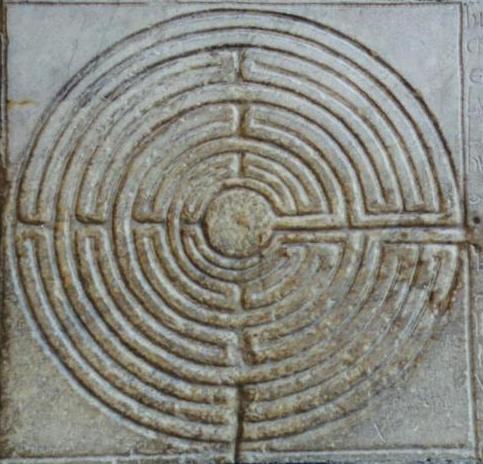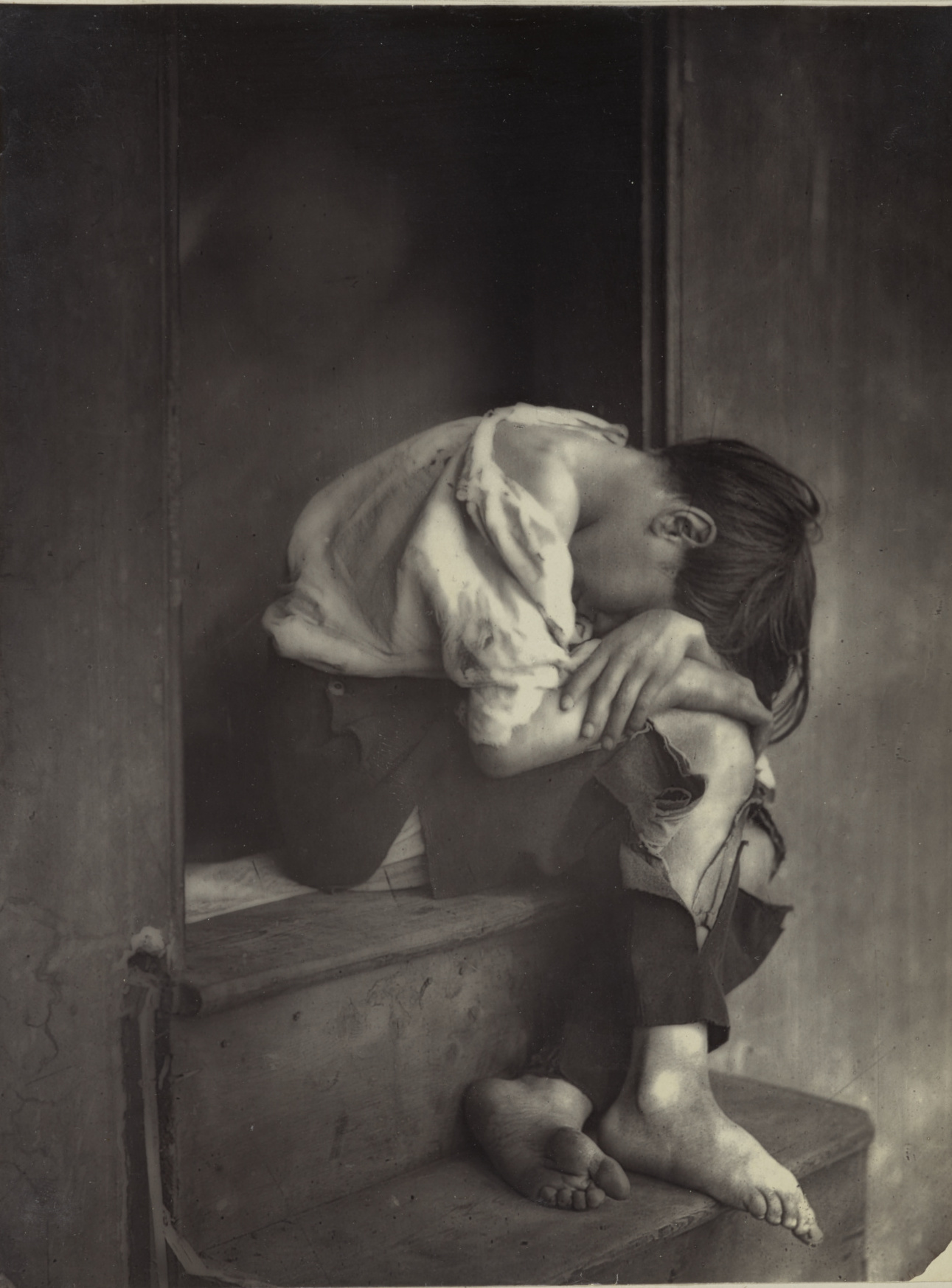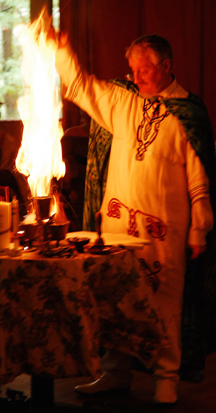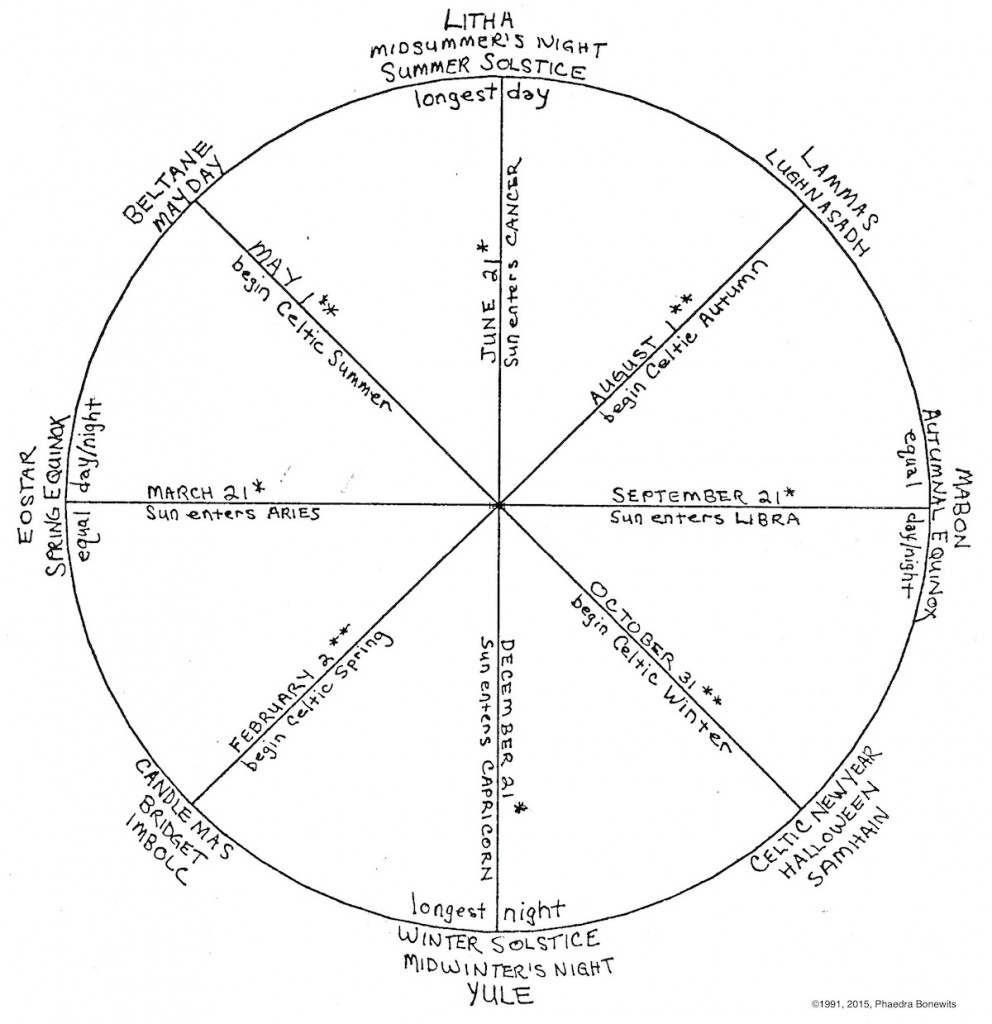As it has proved nigh impossible to get my group of regulars together to ritualize Yule (we did have a lovely dinner celebration last weekend) I had been mulling over what I might do by myself to mark the Solstice.
Do something at dawn, I thought. The sun rises at a very reasonable o’clock this time of year (7:36 am local time). But what? I could go out on my east-facing balcony, perhaps. But in the less-than-a-year I’ve been living in this building, I have learned that the east-facing balcony means the rising sun hits you right in the eyes. It would not be easy to be devotional while trying to prevent my retinas from burning out. So I thought, why not stretch myself and be somewhere nice when the sun rises. The Episcopal church downtown has a lovely garden next to it with a Chartres-style labyrinth in the middle of it.

Now, I have a special relationship with that style of labyrinth. The first labyrinth I ever walked (long ago, when dinosaurs roamed the circle) I helped build, with string and sticks and candles at the turnings, on my friend’s property in Indiana (it’s still there, now marked out in bricks). That night, I was initiated in the center of it. Ever since, whenever, wherever, whatever style labyrinth I walk, it brings me back to that night. I am reminded again of my vows.
When most of us met for dinner last Sunday (and tossed around possibilities for an evening ritual) I said, no matter what, I intended to walk the labyrinth at sunrise. This was met with some skepticism, as my aversion to early morning hours is well known. But I persisted. I invited everyone to join me, Everyone declined (whether for previous commitments, their own aversion to early morning hours or doubt that I would show, I don’t know).
So last night I went to bed reasonably early, told myself when I needed to wake up (6:30-7) and slept like a log till 5 am. Grrr. I know myself well enough to know that if I got up at 5, I’d be pretty groggy by 7:30, and a groggy me should not be behind a steering wheel. I decided to risk going back to sleep using the nature sounds thingy and a sleep mask. Because of course, I couldn’t get back to sleep right away. But I did, and I did wake up a little after 7. It would be cutting it tight, but if I skipped coffee, skipped shower and just threw on some clothes, I could make it.
I got out to the car about 7:30, only to find it was encased in ice. The driver’s side door tends to freeze closed, so my first task was to just get that open. Then with all the defrosters on, I went to work with the ice scraper. Now I was officially late. But still, I persevered.
When I arrived downtown (it’s a small town, so we’re talking ten minutes away) I found a parking place right opposite the garden. Good sign! So at about 7:45, with the sky bright but the sun still not visible over the rolling landscape, I hopped across the street and into the garden.
To my surprise, I was not alone. Turns out, the Episcopalians who own the garden have a custom of walking it on solstice morning. They weren’t going to start till eight, though (isn’t it funny how 8am seems so much more reasonable than 7:36?). Two ladies were there already with candles and lumenaria. I asked if I would be disrupting their plans if I walked the labyrinth, too. They welcomed me warmly, asked if I wanted a candle to carry (Sure!) and invited me to either start now or wait until 8am when they would do a blessing for the walkers. I opted to delay no longer and began to walk. By 8, about ten people had joined me, all in silence.
Walking the labyrinth is a moving meditation. In a slightly altered state, I sang Charlie Murphy’s Light is Returning under my breath, along with other fire chants that came to mind. Sometimes I just walked, ruminating on the oaths I took so very many years ago. I stood in the center of this labyrinth for a long time. Facing east, I did a Qabalistic Cross and the Middle Pillar exercise. I remind myself, that of the five of us who stood in the center of my first labyrinth, only three are still alive. I remind myself, that despite all those who have gone, I am still alive. Despite many trials, I made it to the center of my first labyrinth, and walked out forever changed. I made it to the center of this labyrinth, too, and would walk out again to who knows what. But it doesn’t matter what. I still walk on, step by step, around the labyrinth, first one to the center and last one out again.
One of the Episcopalian ladies read a lovely blessing for those who had walked, perfectly suitable for Christian and Pagan alike. I thanked them for letting me crash their partly, and received some hugs in return. “Merry Christmas,” said one aged lady. Happy Solstice, I said in return.
And then, done. I wasn’t ready to go home, so I walked to a coffee house and got caffeine and a bagel with lox and cream cheese (might as well make the morning as ecumenical as possible). I read the New York Times, then came home for a couple of cups of my own coffee, and to write this all down before I forget.
I think I might try to do a circle of labyrinth walks, at noon on the equinoxes (real noon, not daylight-savings-time noon) and just before sunset on Summer Solstice. Once around the wheel again. Just because I can.
The sky here is bright blue with the sun illuminating all the patches of snow on the hills and the mountains. Hummingbirds are visiting the feeder; the jays and woodpeckers are waiting for me to put peanuts on the balcony rail. The cold will get worse for awhile, but a mere six weeks from now, the days will be noticeably longer. As I have said at so many rituals, Winter Solstice is the promise that no matter how long or dark the night, the light returns. Always.
May all your Solstices be bright.
Light is Returning, Charlie Murphy




